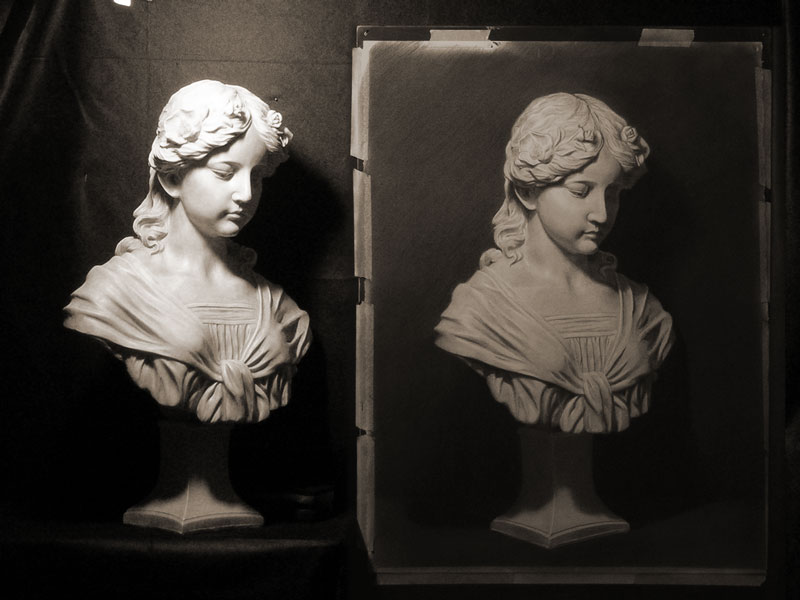The classical way to learn drawing & painting realistically as it is taught in the Academies and Ateliers is roughly as follows:

Bargue Drawing
In a classical atelier you start by copying two dimensional references – the Bargue Drawings – as perfect as possible. This teaches you to see distances, lengths and angles as well as a bit shading. First you would make few general guidelines – the rest is built up through observation and correction. The student goes through several of these drawings with increasing difficulty.

Cast Drawing
The next step in learning the atelier way is making a cast drawing. This not only teaches you to see angles, lengths and distances but also every nuance in the qualites of light and shade so that you are able to make something look three dimensional. Since you don’t need color for the 3D effect you can dispense with a colored object and rather use something made of white plaster. To be able to hit every nuance from lightest lights to darkest shadows you make this cast drawing with charcoal. To simultanously learn about human anatomy you’d use anatomical plaster casts with increasing difficulty.

Cast Painting
You now have a feeling of form and can now switch to color. But to keep it as simple as possible you’d use a plaster cast again but now with colored accents. This is done with oil paints with just a few colors.

Full Color Still Life
You now have a feeling of form and can now switch to color. But to keep it as simple as possible you’d use a plaster cast again but now with colored accents. This is done with oil paints with just a few colors.

Nude Drawing & Painting
Drawing is the foundational skill to realistic art and anatomy is the crucial knowledge you need to obtain as a realist artist. It is necessary to draw as many nudes as possible. Throughout the complete program of the education at an atelier the students have nude drawing classes. These can be done relatively loose with short timed poses to concentrate more on gesture or these can be as long as a cast drawing would take.

Portrait / Figure
To render skintones is the next step in the education in classical realist art. You not only need to be able to see those little nuances but be able to mix them on your palette. Skin does not consist of only one color – it consists of many different colors depending on the location on the body. Ears are much redder as well as knuckles – in contrary the jaw area is much more going to a neutral tone. It all depends on many aspects like gender, age or individual features.